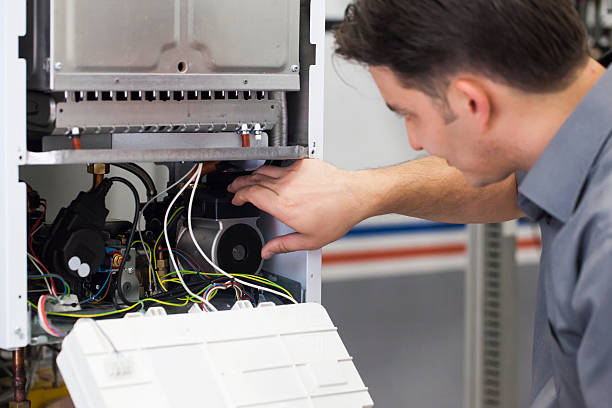A properly installed furnace can make a huge difference in maintaining a warm, comfortable home during the cold months. Whether you’re replacing an outdated system or installing a new one, knowing the steps and considerations involved can help ensure the furnace operates efficiently for years to come. This guide will walk you through the key aspects of furnace installation in Oklahoma City, OK and what to expect during the process.
Types of Furnaces
Choosing the right furnace for your home is critical. Here are some common types to consider:
Gas Furnaces:
The most popular option due to their cost-effectiveness and high energy efficiency.
Oil Furnaces:
Known for their powerful heating capability, typically used in colder regions.
Electric Furnaces:
Ideal for areas where electricity costs are low, offering ease of installation and maintenance.
Propane Furnaces:
A good alternative if natural gas isn’t available in your area.
Factors to Consider Before Installation
Several important factors should be considered before starting the furnace installation process:
Size of the Furnace:
Ensure the furnace is appropriately sized for your home’s square footage to maximize efficiency.
Energy Efficiency:
Look for high-efficiency furnaces (AFUE ratings) that will save on energy costs in the long run.
Ductwork Condition:
The existing ductwork must be in good condition to distribute heat properly.
Local Building Codes:
It’s crucial to adhere to local regulations and building codes for furnace installation to ensure safety.
Furnace Installation Process
Here is a brief overview of the typical installation steps:
Choosing the Location:
The furnace is usually installed in a basement, attic, or dedicated furnace room. Proper ventilation and space are essential.
Preparing the Site:
Clear space around the furnace for easy access and maintenance. The installer may also inspect your ductwork and ventilation system for any needed upgrades.
Setting Up the Furnace:
The furnace is connected to your home’s power source, gas line, or oil tank (depending on the type).
Connecting the Ducts:
The ductwork is connected to ensure proper airflow and heat distribution throughout the home.
Testing the System:
Once installed, the furnace is tested to make sure it runs efficiently, safely, and without leaks.
Common Furnace Installation Mistakes to Avoid
Incorrect Sizing:
An oversized or undersized furnace can lead to inefficiency and frequent repairs.
Improper Ventilation:
Ensure there’s adequate ventilation to prevent dangerous gas buildup.
Neglecting Ductwork:
Old or leaking ducts can drastically reduce the furnace’s efficiency.
Skipping Permits:
Always check with local authorities about the necessary permits for installation.
Furnace Maintenance Tips Post-Installation
Proper maintenance is crucial for extending the lifespan of your furnace and ensuring it runs efficiently.
Regular Filter Changes:
Replace filters every 1-3 months to maintain airflow and indoor air quality.
Annual Inspections:
Have your furnace inspected annually by a professional to detect and fix any issues before they become major problems.
Clean Ducts:
Ensure your ductwork is clean and free of obstructions for optimal airflow.
Thermostat Calibration:
Keep your thermostat calibrated correctly to prevent energy waste.
FAQs
How long does furnace installation take?
On average, furnace installation takes between 4 to 10 hours, depending on the complexity of the job and whether ductwork or additional upgrades are needed.
Can I install a furnace myself?
While it’s possible, it’s not recommended unless you are a certified HVAC professional. Furnace installation involves gas, electrical, and safety components that require expertise to avoid dangerous situations.
What is the cost of installing a furnace?
The cost varies widely depending on the type of furnace, your location, and the complexity of the installation. Generally, prices range from $3,000 to $7,000 including labor and materials.
How often should a furnace be replaced?
Furnaces typically last between 15 to 20 years with proper maintenance. If your system is nearing this age, it might be time to consider a replacement, especially if it requires frequent repairs.
Do I need a permit to install a new furnace?
Yes, most local jurisdictions require a permit for furnace installation to ensure it complies with building and safety codes. Always check with your local building department.
Conclusion
Professional Furnace installation is a significant investment that requires careful planning and professional expertise. By understanding the types of furnaces, the installation process, and maintenance requirements, you can ensure your furnace operates efficiently and keeps your home warm for years to come. Always consult a qualified HVAC technician to handle the installation, ensuring safety and long-term performance.


